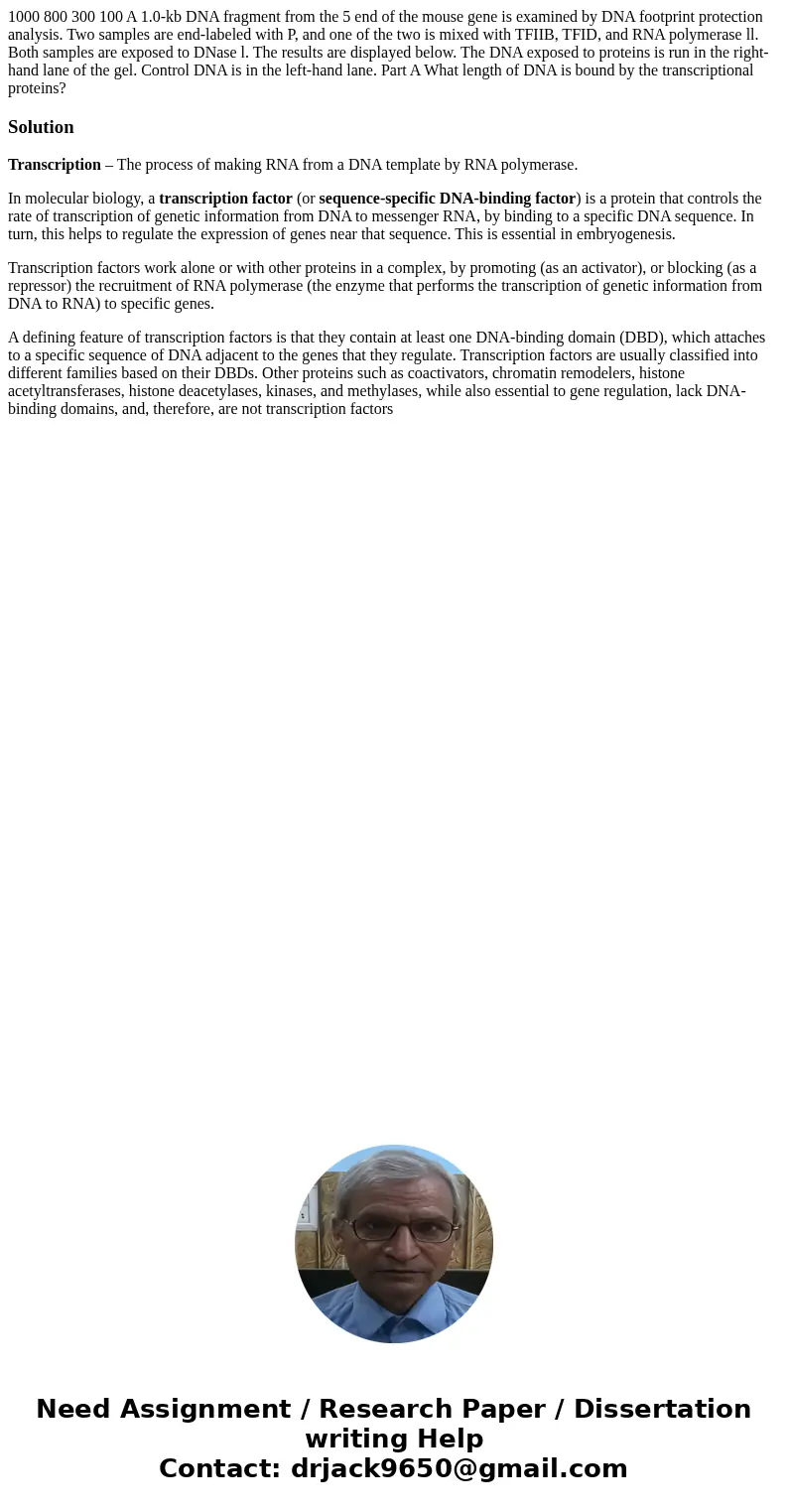1000 800 300 100 A 10kb DNA fragment from the 5 end of the m
Solution
Transcription – The process of making RNA from a DNA template by RNA polymerase.
In molecular biology, a transcription factor (or sequence-specific DNA-binding factor) is a protein that controls the rate of transcription of genetic information from DNA to messenger RNA, by binding to a specific DNA sequence. In turn, this helps to regulate the expression of genes near that sequence. This is essential in embryogenesis.
Transcription factors work alone or with other proteins in a complex, by promoting (as an activator), or blocking (as a repressor) the recruitment of RNA polymerase (the enzyme that performs the transcription of genetic information from DNA to RNA) to specific genes.
A defining feature of transcription factors is that they contain at least one DNA-binding domain (DBD), which attaches to a specific sequence of DNA adjacent to the genes that they regulate. Transcription factors are usually classified into different families based on their DBDs. Other proteins such as coactivators, chromatin remodelers, histone acetyltransferases, histone deacetylases, kinases, and methylases, while also essential to gene regulation, lack DNA-binding domains, and, therefore, are not transcription factors

 Homework Sourse
Homework Sourse